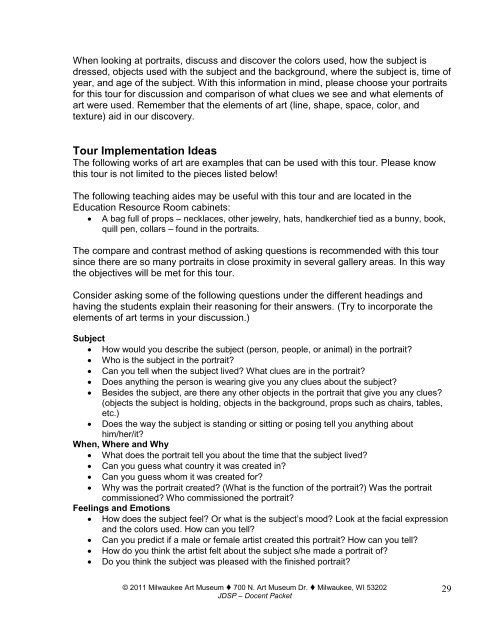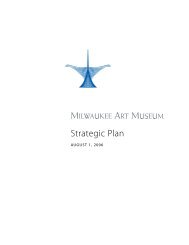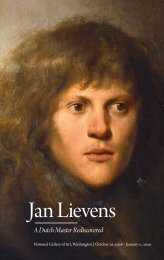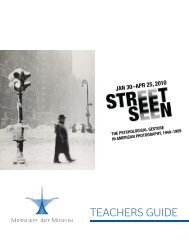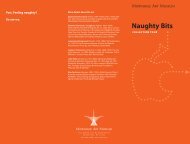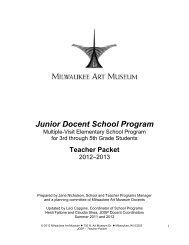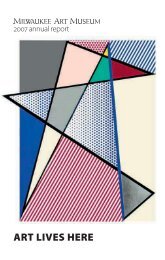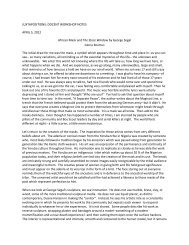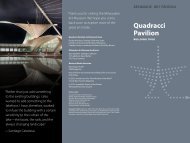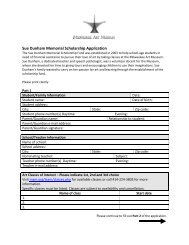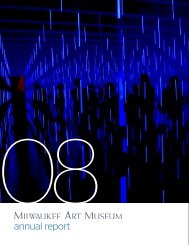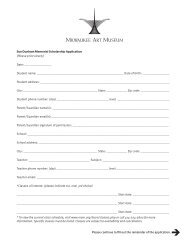Junior Docent School Program - Milwaukee Art Museum
Junior Docent School Program - Milwaukee Art Museum
Junior Docent School Program - Milwaukee Art Museum
You also want an ePaper? Increase the reach of your titles
YUMPU automatically turns print PDFs into web optimized ePapers that Google loves.
When looking at portraits, discuss and discover the colors used, how the subject is<br />
dressed, objects used with the subject and the background, where the subject is, time of<br />
year, and age of the subject. With this information in mind, please choose your portraits<br />
for this tour for discussion and comparison of what clues we see and what elements of<br />
art were used. Remember that the elements of art (line, shape, space, color, and<br />
texture) aid in our discovery.<br />
Tour Implementation Ideas<br />
The following works of art are examples that can be used with this tour. Please know<br />
this tour is not limited to the pieces listed below!<br />
The following teaching aides may be useful with this tour and are located in the<br />
Education Resource Room cabinets:<br />
A bag full of props – necklaces, other jewelry, hats, handkerchief tied as a bunny, book,<br />
quill pen, collars – found in the portraits.<br />
The compare and contrast method of asking questions is recommended with this tour<br />
since there are so many portraits in close proximity in several gallery areas. In this way<br />
the objectives will be met for this tour.<br />
Consider asking some of the following questions under the different headings and<br />
having the students explain their reasoning for their answers. (Try to incorporate the<br />
elements of art terms in your discussion.)<br />
Subject<br />
How would you describe the subject (person, people, or animal) in the portrait?<br />
Who is the subject in the portrait?<br />
Can you tell when the subject lived? What clues are in the portrait?<br />
Does anything the person is wearing give you any clues about the subject?<br />
Besides the subject, are there any other objects in the portrait that give you any clues?<br />
(objects the subject is holding, objects in the background, props such as chairs, tables,<br />
etc.)<br />
Does the way the subject is standing or sitting or posing tell you anything about<br />
him/her/it?<br />
When, Where and Why<br />
What does the portrait tell you about the time that the subject lived?<br />
Can you guess what country it was created in?<br />
Can you guess whom it was created for?<br />
Why was the portrait created? (What is the function of the portrait?) Was the portrait<br />
commissioned? Who commissioned the portrait?<br />
Feelings and Emotions<br />
How does the subject feel? Or what is the subject‟s mood? Look at the facial expression<br />
and the colors used. How can you tell?<br />
Can you predict if a male or female artist created this portrait? How can you tell?<br />
How do you think the artist felt about the subject s/he made a portrait of?<br />
Do you think the subject was pleased with the finished portrait?<br />
© 2011 <strong>Milwaukee</strong> <strong>Art</strong> <strong>Museum</strong> 700 N. <strong>Art</strong> <strong>Museum</strong> Dr. <strong>Milwaukee</strong>, WI 53202<br />
JDSP – <strong>Docent</strong> Packet<br />
29


